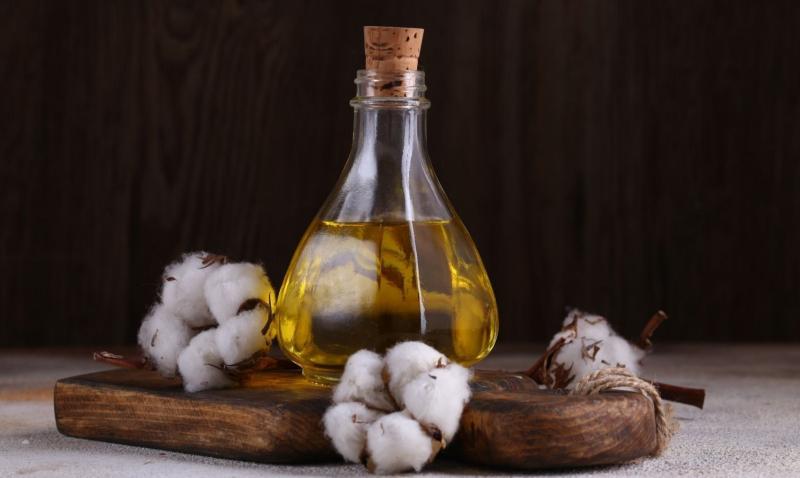Decline in India’s Cotton Production

India, once a leading cotton producer and exporter, is experiencing a significant decline in cotton production due to factors like technological stagnation, pest infestations, and policy inaction. The absence of new genetically modified (GM) cotton variants since 2006 has left crops vulnerable to pests like the pink bollworm, leading to reduced yields. Additionally, erratic weather patterns and an overreliance on outdated Bt cotton technology have exacerbated the situation. This decline has increased dependence on imports, with cotton imports rising from USD 518.4 million in 2023–24 to USD 1.04 billion in 2024–25, while exports fell from USD 729.4 million to USD 660.5 million. The production downturn has also impacted the textile industry and reduced cottonseed oil output, affecting India’s edible oil supply. Addressing these challenges requires expediting approval for pest-resistant GM cotton hybrids, promoting high-density planting systems, and enhancing farmer support services to revitalize India’s cotton sector.
India, once the world’s largest cotton producer and exporter, is facing a significant decline in cotton production, primarily due to the lack of technological advancements and policy inaction.
What are the Reasons for Decline in India’s Cotton Production?
- Initial Growth:Hybrid Cotton Varieties developed by Indian scientists like C.T. Patel and B.H. Katarki in the 1970s, has significantly improved yields.
- Bt (Bacillus thuringiensis) cotton, introduced in 2002–03, used genes from bacterium Bacillus thuringiensis to protect against pests like the American bollworm.
- By 2013–14, it covered over 95% of India’s cotton area, doubling yields to 566 kg per hectare (kg/ha). This helped India become the world’s top cotton producer by 2015–16 and a major exporter.
- Bt (Bacillus thuringiensis) cotton, introduced in 2002–03, used genes from bacterium Bacillus thuringiensis to protect against pests like the American bollworm.
- Stagnation after Success: Despite the success of Bt and Bollgard-II technologies, India has not approved any new genetically modified (GM) crops cotton variants since 2006.
- Indigenous innovations, such as whitefly- and pink bollworm-resistant cotton developed by Indian institutions, remain stuck in regulatory limbo.
- The 2010 moratorium on Bt brinjal, despite Genetic Engineering Appraisal Committee (GEAC) clearance, set a precedent for halting field trials of other GM crops, preventing the introduction of new technologies to improve cotton production.
- Infestation: The decline in cotton production in India is primarily due to the increased infestation of the pink bollworm (PBW). Initially, Bt cotton provided effective pest control, but over time, PBW developed resistance to Bt proteins.
- This pest now infests crops as early as 40-45 days after sowing, damaging bolls and flowers.
- The exclusive cultivation of Bt cotton has contributed to this resistance, leading to significant reductions in both the quality and quantity of cotton lint.
- Impact on Production: India’s cotton production, which reached 39.8 million bales in 2013-14, is expected to drop to 29.5 million bales by 2024-25, with yields falling below 450 kg/ha, far below global leaders like China (1993 kg/ha).
What are the Concerns Regarding Decline in Cotton Production?
Lower cotton output affects oil production, increasing India’s edible oil import dependency.
Rising Dependence on Imports: Cotton imports surged from USD 518.4 million in 2023–24 to USD 1.04 billion in 2024–25, while exports fell from USD 729.4 million to USD 660.5 million.
Production decline reversed India’s trade position, with imports surpassing exports, eroding its previous competitive edge in the global cotton market.
Contradictory Trade and Tech Policies: Indigenous GM innovations from premier institutions such as National Botanical Research Institute have been delayed or ignored.
While field trials of GM crops are blocked, however India allowed the import of GM soyameal in 2021.
The moratorium on GM crops and lack of regulatory clarity have deterred innovation in the cotton sector. Regulatory decisions have shifted from scientific risk assessment to public sentiment and legal interventions.
Missed Opportunities in Global Markets: Countries like the US and Brazil, with robust biotech adoption, are capturing the export space once dominated by India.
Domestic textile industries are now sourcing cotton from abroad, adding to input costs and reducing competitiveness.
Decline in Cottonseed Oil: Cottonseed contributes to edible oil production, making it the third-largest vegetable oil source in India after mustard and soybean.
What Can be Done to Enhance India’s Cotton Production?
- Technological Interventions: Expedite regulatory clearance for pest-resistant and high-yielding GM cotton hybrids (e.g., whitefly-resistant and pink bollworm-resistant varieties).
- Promotion of High-Density Planting System (HDPS): Expand the adoption of HDPS across cotton-growing states to increase plant population per unit area and improve yield.
- Farmer-Centric Extension Services: Scale platforms like Cott-Ally to provide real-time updates on MSP, weather, pest alerts, and procurement logistics.
- Enhance agricultural extension through Krishi Vigyan Kendras and the Cotton Corporation of India to disseminate best farm practices.
- Post-Harvest and Market Reforms: Expand “Kasturi Cotton” branding with QR-code traceability to ensure quality assurance in global markets.
- Operationalize the five-year Mission for Cotton Productivity (announced in Budget 2025–26) to enhance yield, ensure sustainability, and promote Extra-Long Staple cotton cultivation (known for their superior quality, softness, and durability), thereby reducing import dependence.
- Encourage investment in spinning, weaving, and garmenting sectors linked with cotton clusters to ensure holistic sectoral growth.
To read more about Edible Oil News continue reading Agriinsite.com
Source : Drishtiias
















